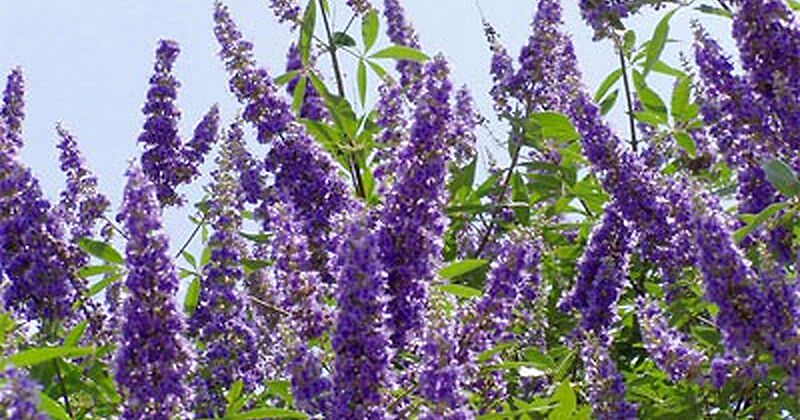Chaste Tree

Chaste Tree, Vitex
Chaste tree’s abundant, long-lasting purple flowers make quite an impression, especially when this shrub is 10–15' tall. There is nothing more striking in early summer once chaste trees burst into bloom. They also attract butterflies to your garden.
Growing
Chaste tree prefers full sun but tolerates partial shade. Any well-drained, loamy soil will do. Plants often grow much wider than is expected, so be sure to give your chaste tree plenty of room to grow to its mature size; don’t plant too close to your driveway. Shearing an established chaste tree that has outgrown its space typically ruins the overall form of the tree.
Chaste tree does not have an extensive root system, so when transplanting, be sure you don’t damage the few roots it possesses. The roots should not be exposed to the sun or wind while transplanting in the spring.
Tips
This shrub is often integrated into large mixed shrub and perennial borders, but it’s equally if not more effective when planted as a specimen. Even when not in flower, chaste tree’s ornate, scented foliage is striking. If possible, consider planting this shrub near sunny patios and windows so you can enjoy the fragrance.
Recommended
V. agnus-castus is an open, deciduous shrub with a spreading habit. It bears leaves that emerge from a central stem, similar in appearance to a hand with outstretched fingers. The aromatic foliage is complimented by fragrant, purple flowers borne in upright panicles in early to mid-summer. The flower panicles themselves can grow 12–18" in length. Cultivars are available.
Features: open, rounded habit; aromatic and ornate foliage; purple to blue flowers
Height: 10–15'
Spread: 10–15'
Hardiness: zones 6–9


